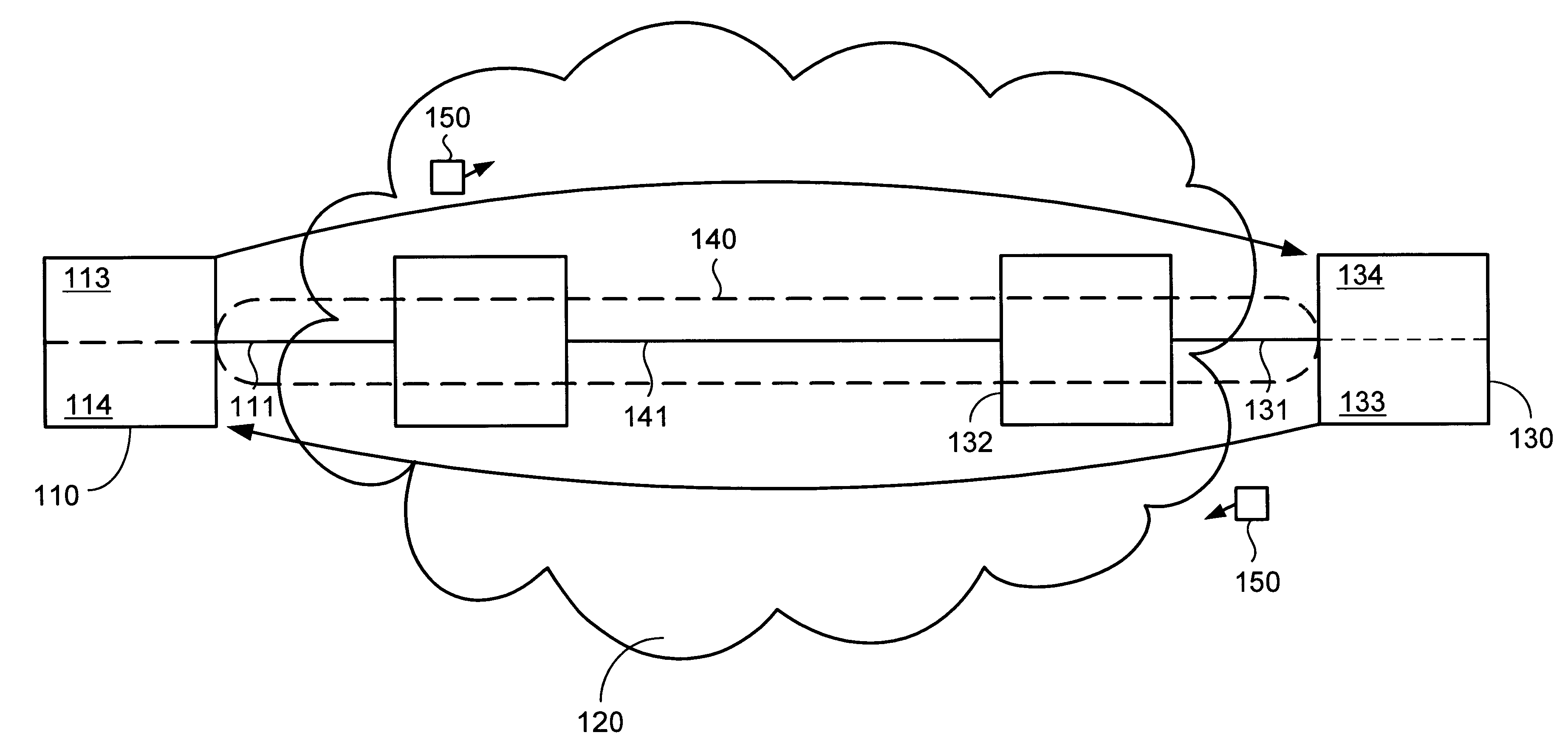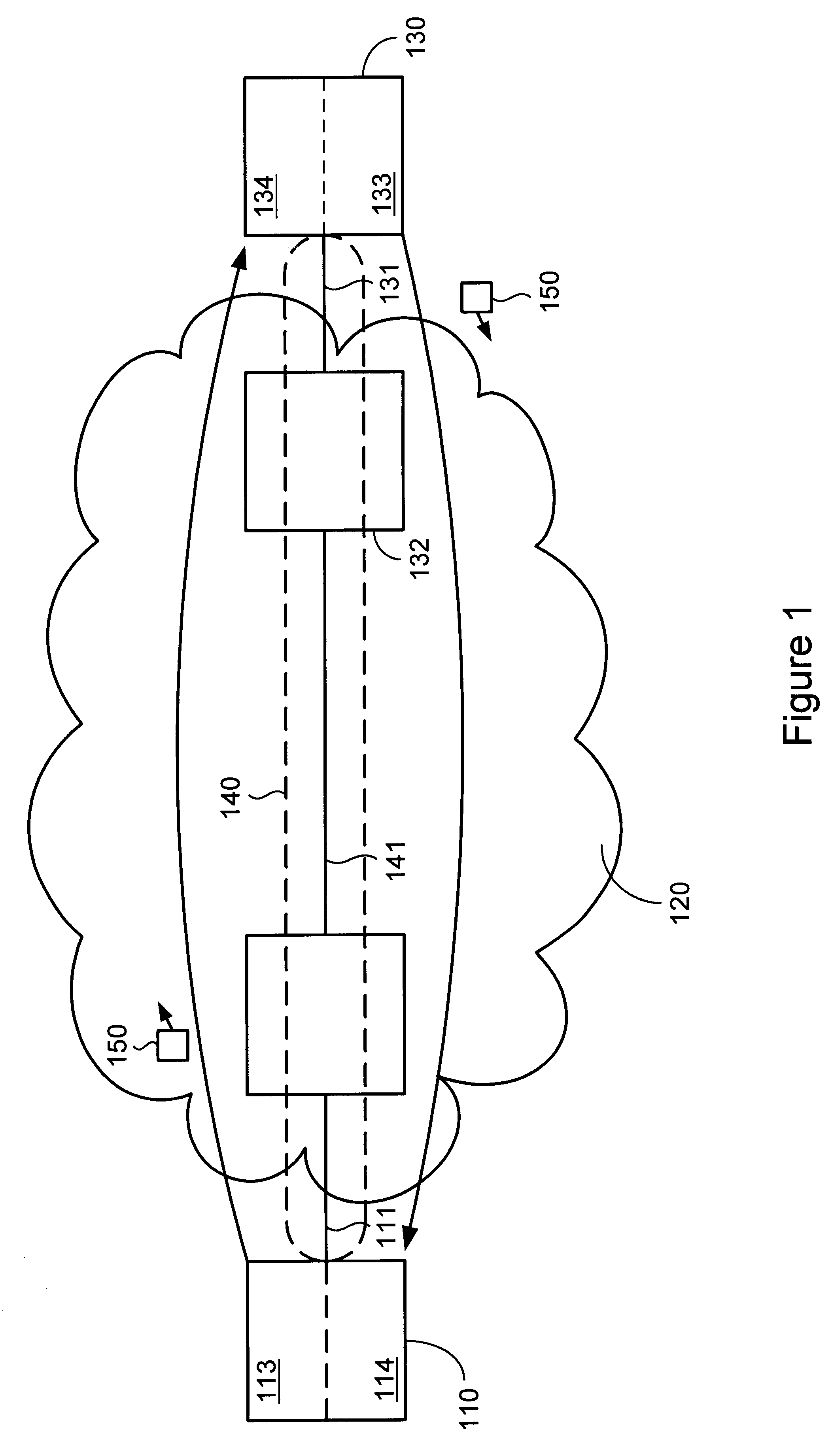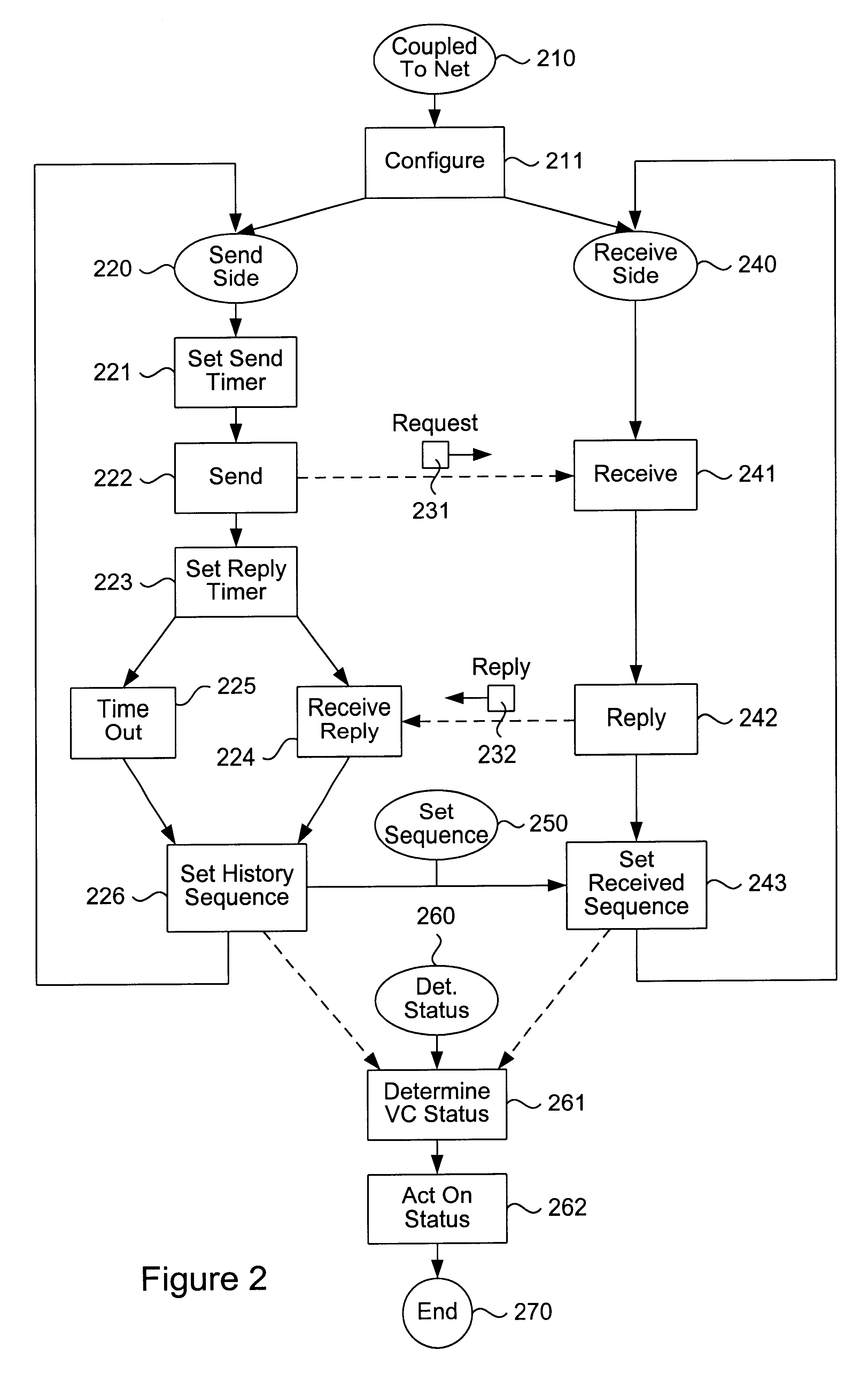End-to-end bidirectional keep-alive using virtual circuits
a virtual circuit and bidirectional technology, applied in the field of end-to-end bidirectional keep-alive techniques using virtual circuits, can solve the problems of not generally allowing nodes to determine, determining whether particular virtual circuits are still operational or have failed, and limiting the information provided by the lmi to the communication link
Inactive Publication Date: 2001-10-16
CISCO TECH INC
View PDF175 Cites 80 Cited by
- Summary
- Abstract
- Description
- Claims
- Application Information
AI Technical Summary
Problems solved by technology
One problem which has arisen in the art is determining whether particular virtual circuits are still operational, or have failed due to one or more communication links in the virtual circuit having failed.
However, information provided by the LMI is limited to the communication links directly between routers and the frame relay network, and does not generally allow nodes to determine if a virtual circuit with a remote node has failed at an intermediate communication link in the frame relay network.
Another problem which has arisen in the art is that of determining congestion for virtual circuits for which communication is primarily unidirectional.
However, passive receivers generate frames at most infrequently, and thus have little or no opportunity to cause information regarding congestion to be transmitted back to the source in a multicast video session.
However, these known methods operate at higher-level protocol layers, such as an application (level 3) protocol layer in the OSI protocol layer model, and thus can take substantially more time and more resources to respond to a broken virtual circuit than may be desirable, particularly for band-width-intensive applications such as multicast video.
However, this method is operative only for aggregates of virtual circuits, and is not effective for determining if an individual virtual circuit is broken, congested, or otherwise requires remedial action at an intermediate point in the frame relay network.
Method used
the structure of the environmentally friendly knitted fabric provided by the present invention; figure 2 Flow chart of the yarn wrapping machine for environmentally friendly knitted fabrics and storage devices; image 3 Is the parameter map of the yarn covering machine
View moreImage
Smart Image Click on the blue labels to locate them in the text.
Smart ImageViewing Examples
Examples
Experimental program
Comparison scheme
Effect test
Embodiment Construction
Although preferred embodiments are disclosed herein, many variations are possible which remain within the concept, scope, and spirit of the invention, and these variations would become clear to those skilled in the art after perusal of this application.
the structure of the environmentally friendly knitted fabric provided by the present invention; figure 2 Flow chart of the yarn wrapping machine for environmentally friendly knitted fabrics and storage devices; image 3 Is the parameter map of the yarn covering machine
Login to View More PUM
 Login to View More
Login to View More Abstract
The invention provides a method and system for sending and receiving end-to-end bidirectional keep-alive messages using virtual circuits. Nodes coupled to a network, such as a frame relay network, periodically exchange link-layer "keep-alive" messages which indicate information regarding configuration and status of the virtual circuit, as well as information regarding congestion at sending nodes. Nodes respond to received keep-alive messages, or to timed-out failure to receive keep-alive messages, with follow-on actions, such as attempting to reconnect when a virtual circuit fails. Keep-alive messages may be propagated across multiple networks of either similar or different architecture. Keep-alive messages include sent and received sequence numbers, thus providing receiving nodes with a technique for determining if any keep-alive messages have been lost. Keep-alive messages can also include information regarding configuration of the virtual circuit, status of the virtual circuit (including counts of recent keep-alive message failure or success), and congestion at the sending node.
Description
1. Field of the InventionThis invention relates to end-to-end bidirectional keep-alive techniques using virtual circuits.2. Description of Related ArtIn frame relay networks and some other networking techniques, communication between nodes uses virtual circuits, either permanent virtual circuits (PVCs) or switched virtual circuits (SVCs)One problem which has arisen in the art is determining whether particular virtual circuits are still operational, or have failed due to one or more communication links in the virtual circuit having failed. Frame relay networks usually include a local management interface (LMI), a management technique for local communication links between nodes and the network. However, information provided by the LMI is limited to the communication links directly between routers and the frame relay network, and does not generally allow nodes to determine if a virtual circuit with a remote node has failed at an intermediate communication link in the frame relay networ...
Claims
the structure of the environmentally friendly knitted fabric provided by the present invention; figure 2 Flow chart of the yarn wrapping machine for environmentally friendly knitted fabrics and storage devices; image 3 Is the parameter map of the yarn covering machine
Login to View More Application Information
Patent Timeline
 Login to View More
Login to View More Patent Type & Authority Patents(United States)
IPC IPC(8): H04L29/06H04Q11/04H04L12/26H04L29/14H04L12/24H04L12/28H04L12/56H04L69/40
CPCH04L12/2854H04L29/06H04L43/0811H04L43/10H04Q11/0478H04L67/14H04L69/40H04L41/06H04L2012/5627H04L41/40H04L9/40
Inventor NATARAJAN, SHANKARFOWLER, GREGORY A.
Owner CISCO TECH INC
Features
- R&D
- Intellectual Property
- Life Sciences
- Materials
- Tech Scout
Why Patsnap Eureka
- Unparalleled Data Quality
- Higher Quality Content
- 60% Fewer Hallucinations
Social media
Patsnap Eureka Blog
Learn More Browse by: Latest US Patents, China's latest patents, Technical Efficacy Thesaurus, Application Domain, Technology Topic, Popular Technical Reports.
© 2025 PatSnap. All rights reserved.Legal|Privacy policy|Modern Slavery Act Transparency Statement|Sitemap|About US| Contact US: help@patsnap.com



